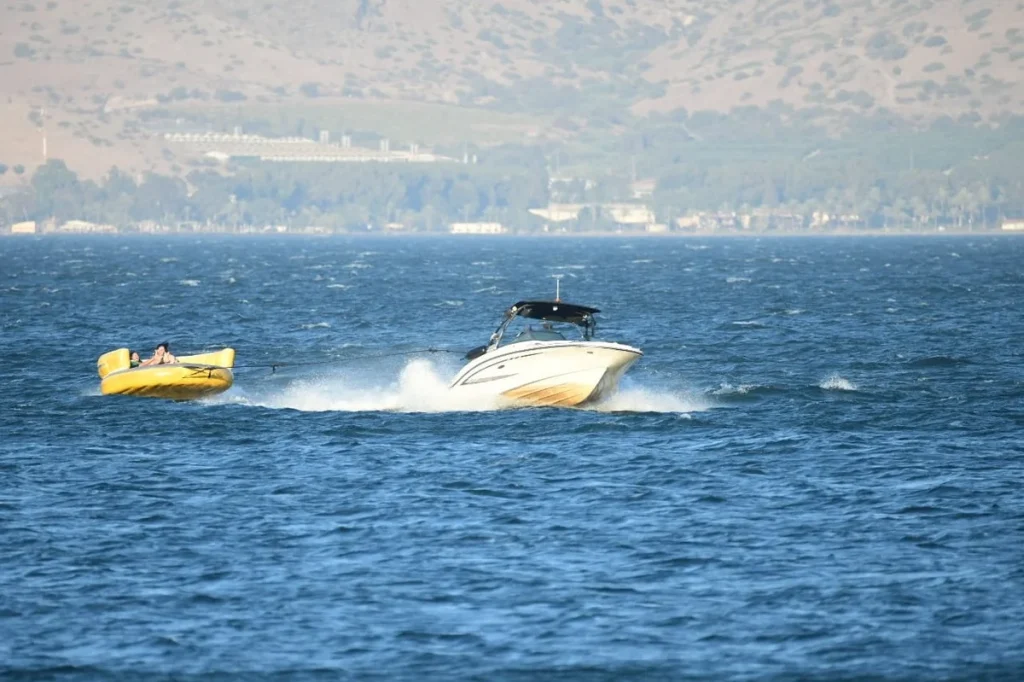Jerusalem, 21 September, 2025 (TPS-IL) — For the first time anywhere in the world, desalinated seawater is being pumped into a freshwater lake, as Israel begins transferring Mediterranean water into the Sea of Galilee, also known as the Kinneret, in an unprecedented project described by officials as a safeguard for the country’s water security.
“The Kinneret is our national reservoir. Israel does not have many natural water sources, so this lake is of tremendous importance – both emotionally and strategically. Historically it has been a vital source of drinking water, and even today it remains a strategic national water reserve,” Israel Water Authority Director General Yechezkel Lifshitz told The Press Service of Israel.
The initiative, known as the “Reverse Carrier,” mirrors the National Water Carrier inaugurated in 1994, which transported Kinneret water to the center and south of the country. “The project we are now operating is essentially the reverse of the National Water Carrier: instead of sending water from the Kinneret to central Israel, we are conveying desalinated seawater from the Mediterranean into the Kinneret, along the same route but in the opposite direction,” Lifshitz explained to TPS-IL.
Construction began in 2018, and the project was inaugurated in 2022 at a cost of roughly NIS 900 million ($269 million). It has now reached full-scale operation following the driest winter in a century.
“Although the project was inaugurated about a year and a half ago, full-scale pumping began only now because of the severe drought. The past winter was the driest in the last hundred years, and the Kinneret dropped to what we call the ‘red line’ – a level we are not willing to cross,” Lifshitz said.
According to the Water Authority, the desalinated water is being channeled into the Kinneret through the Zalmon Stream in a continuous year-round flow that also revives a once-dry streambed. “During the winter months the flow is increased, and afterwards it drops to about 1,000 liters per second,” Lifshitz said. He added that if rainfall is unusually strong, pumping may be temporarily reduced or halted.
By late October or early November, the Water Authority expects to be moving up to 5,000 cubic meters of desalinated water per hour, amounting to tens of millions of cubic meters throughout the autumn and winter months. The water travels 100 to 150 kilometers from desalination plants in Ashdod, Hadera, and other coastal sites.
“The desalination technology itself is not new; the innovation lies in the concept. We view nature not only as a supplier of water but also as a consumer of water. This is a unique approach: actively providing water back to nature from our desalination facilities,” Lifshitz said.
He stressed that the desalinated water is of higher quality than the lake’s natural water in terms of salinity and other parameters, with no expected negative environmental impact.
“This project was conceived with a long-term perspective. We anticipate a decline in rainfall across the Middle East, particularly in northern Israel. Therefore it is essential to maintain a high water level in the Kinneret to preserve it both as a natural asset and as a strategic national reservoir. Israel’s water sector plans decades ahead; we already have a master plan extending to the year 2075,” Lifshitz said.
Pumping desalinated water into freshwater lakes has rarely been attempted due to significant ecological, technical, and economic challenges. Freshwater ecosystems are delicate, and even clean desalinated water can alter salinity, pH, and nutrient balances, potentially disrupting fish, plants, and microorganisms. Delivering the large volumes required over long distances is technically complex, demanding extensive pipelines, pumping stations, and flow-control systems. On top of this, desalinated water is expensive to produce, making its use for lake replenishment historically seen as economically inefficient compared with supplying drinking water or agriculture.
The lake’s largest natural inflow comes from the Upper Jordan River, whose main sources are the Hasbani, Dan, and Banias rivers, which originate in the Upper Galilee and Golan Heights. These rivers are fed by rainfall and local groundwater. At the southern tip of the lake, the Jordan River continues toward the Dead Sea.






























